
Our first stop was the vibrant city of Barcelona, the capital city of the Catalonia region of Spain. We boarded an overnight train from Marseille and arrived to sunny and HOT weather in Barcelona. Finding a hotel was a bit more of an effort than it normally is or perhaps it was the heat and the warm clothes we were wearing from France that made it seem that much longer. After wandering down the famous and well known Las Ramblas and its associated side streets, at noon we finally found a place we would call home for the next five days; Avinyo Hostel. Right away, we could tell Spain was a whole different beast compared to France in regards to accommodation costs. Most of the one and two star hotels that we would normally have paid 45-50 Euros in France were going for 65-80 Euros in Spain. We ended up staying at Avinyo Hostel for 43 Euros a night, which was a steal. We had our own private room which was immaculate, bright and very roomy but had to use a shared bathroom which to our luck was always kept clean…a bonus for Chris and I!!
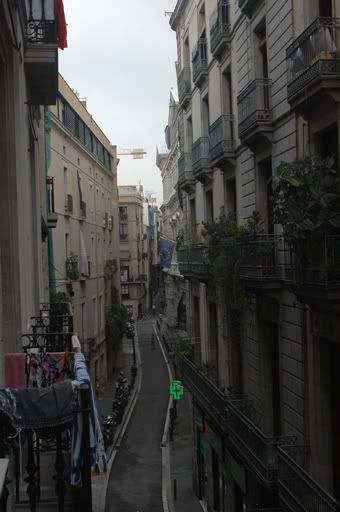
Well as I write this, today is almost the end of day 5 of our 5-day stint in Barcelona. It has been an awesome five days full of medieval palaces and plazas, fantastic modernist architecture, a lively nightlife which never seems to end and some appetizing food which is sure to whet anyone’s appetite!! Our two favorite restaurants, which we would recommend to anyone visiting Barcelona, are the “Les 15 Nits” in the Placa Riel square and “La Fonda” just off Las Ramblas closer to the water. The long line ups that start half an hour before the restaurants open at 8pm are definitely worth the wait; the food is savory, the prices unheard of and the wine as cheap as it gets, who wouldn’t want to go here for a bite to eat. The weather has been quite hot for us with temperatures almost always in the low to mid 30’s and the evenings coming down to a mere 26-27 degrees. It’s hard for us to leave Barcelona as there is still so much more we could see but at the same time, we both know we will be coming back here as it is a place where you can lose all sense of what day and time it is and just immerse yourself in all that is around you. The only difference next time would be that we would want to come back with our close friends as we can see this being a wonderful place to rent a villa and experience this amazing city with a group of friends. As mentioned above, the last five days have been jam packed with activity so enjoy Barcelona with us through our eyes.
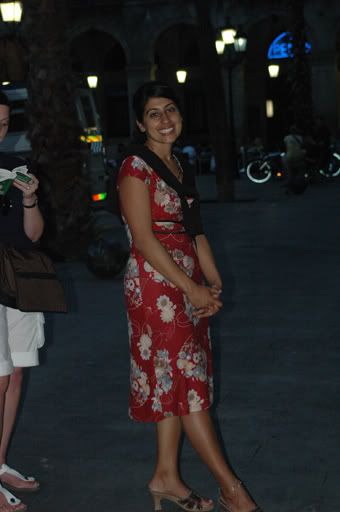
LAS RAMBLAS
Known as one of the most busy and well-known streets in Spain, Las Ramblas is definitely a street where you can just sit, sip sangria and watch passerbys all day. This tree shaded central walkway is full of charisma and excitement as one can come across vendors, mime street performers, musicians and artists all striving to provide entertainment while trying to earn a living. The avenue stretches from the Placa Catalunya all the way down to the monument to Columbus by the water’s edge with a whole lot in between. There is no such thing as just taking a quick walk down this street…it’s a must see/do when in Barcelona to soak in the atmosphere.
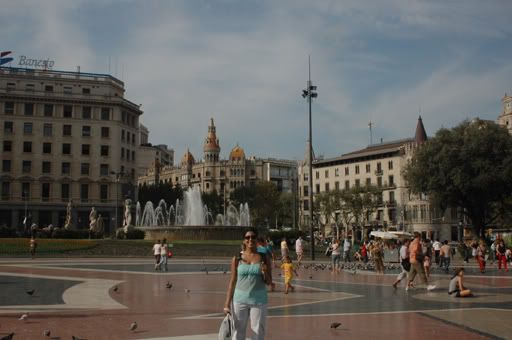
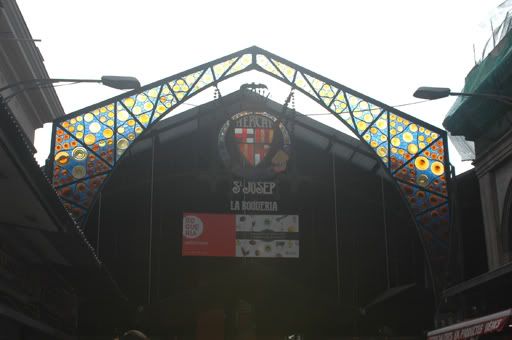
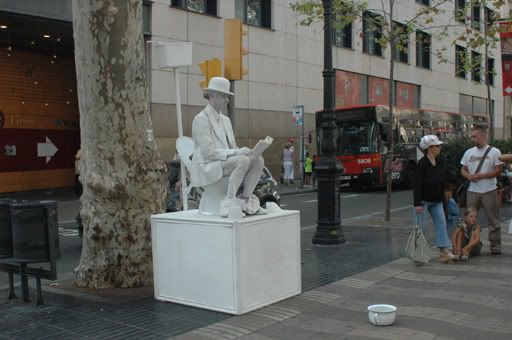
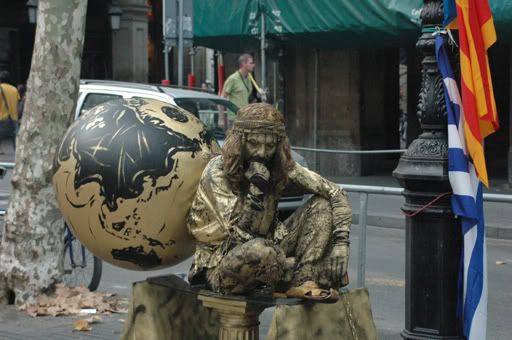
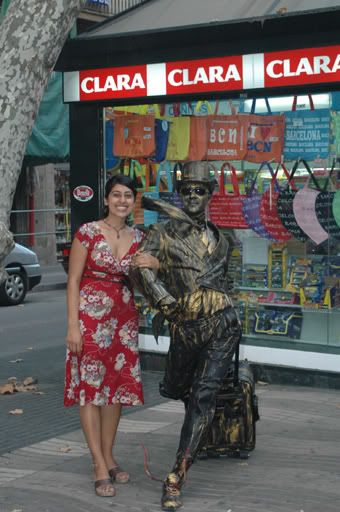
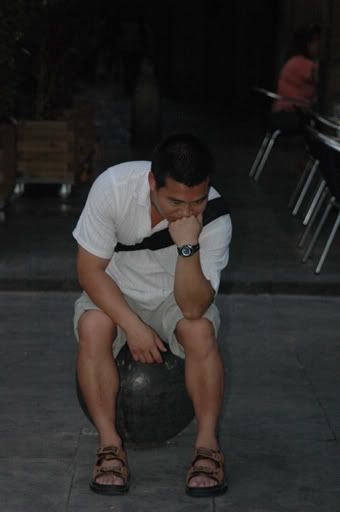
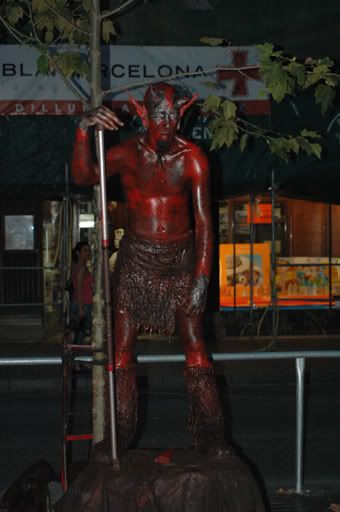

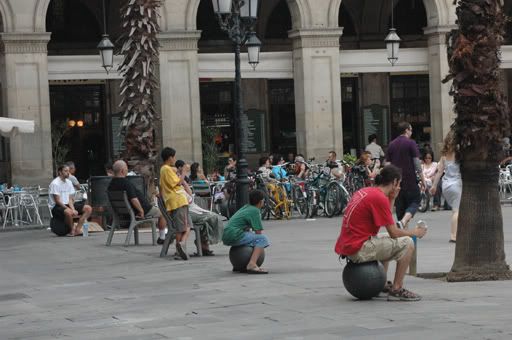
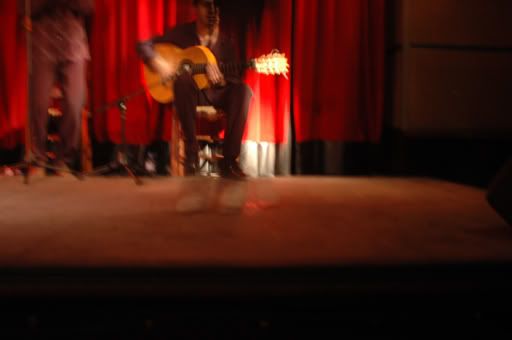
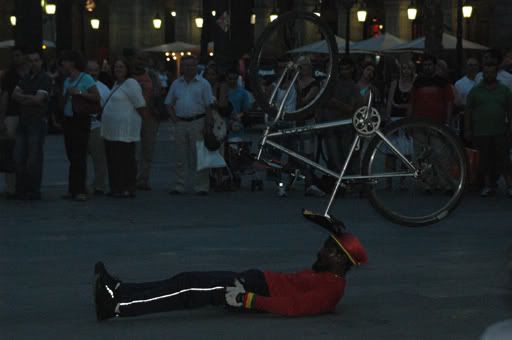
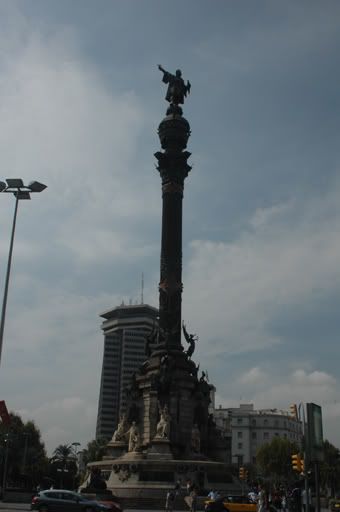
BARRI GOTHIC (GOTHIC QUARTER)
The Gothic Quarter is the heart of Barcelona where you can find the architectural heritage of yesterday through the remaining ancient fortifications, Gothic cathedrals and medieval buildings. This site was chosen by the Romans in the reign of Augustus to find a new town and has been the location of the city’s administrative buildings ever since.
It is here where Chris and I stumbled upon a free outdoor concert in the Placa del Rei on our first night in Barcelona. Placa del Rei is in the heart of the Gothic quarter embedded behind the Palace and amongst the old Roman walls and is Barcelona’s favorite venues for concerts and artistic activities. It is here where we enjoyed the talents of many young artists during the International Folk Festival. There was dancing, colorful costumes and singing all accompanied by live bands representing various countries and regions such as Armenia, Poland, Argentina, Orenburg and of course Catalonia. We spent hours sitting in this old quarter watching the varying talents and skills offered by this free event. The crowds gathered and before we knew it, there were loads of people, locals and tourists alike, tapping to the music and enjoying the festivities. Our favorite would have to be Argentina with their upbeat attitudes and musical performances that kept making us shake our heads and wonder how they did it. Their performance ended with a well-deserved standing applause.

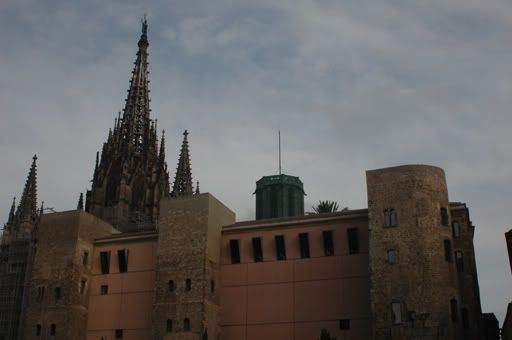
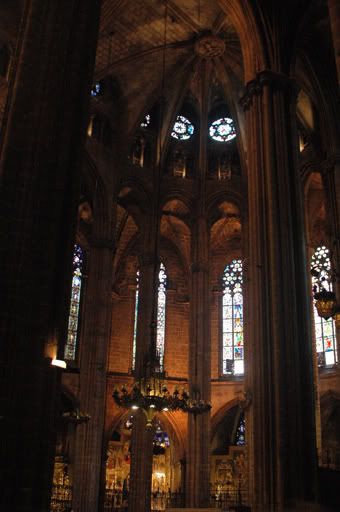
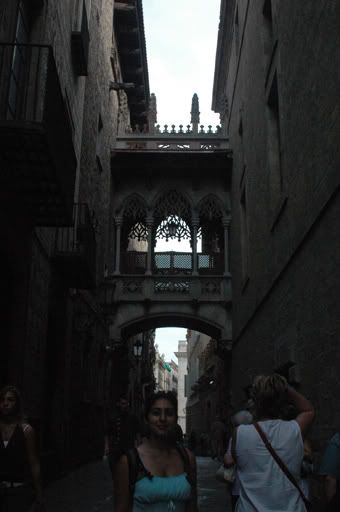
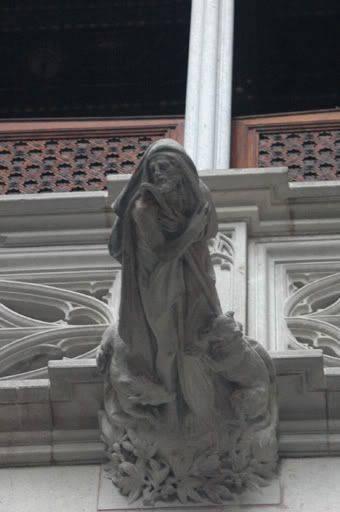
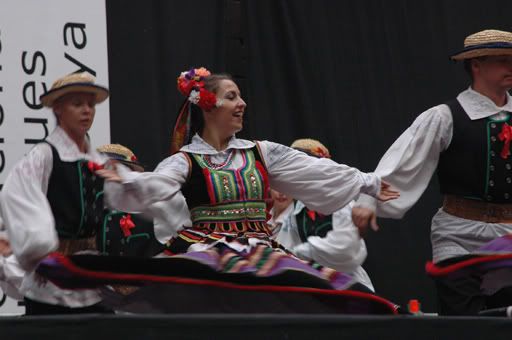

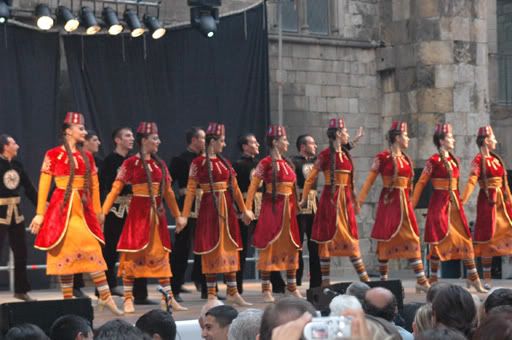
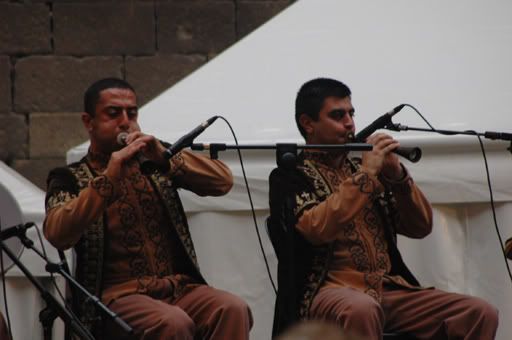
MODERNIST ARCHITECTURE
Barcelona brings a whole different meaning to the word modernist architecture. You can spend days wandering the streets and come across new and surprising buildings each day. The most popular area for modern architecture is the Quadrant d’Or also known as the Golden Square or Eixample area. It is here where you can see the defining works of famous architects such as Montaner, Cadafalch, Bassegoda and of course, the one and only, Antonio Gaudi.
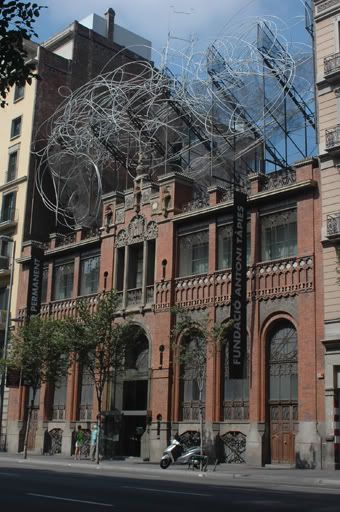
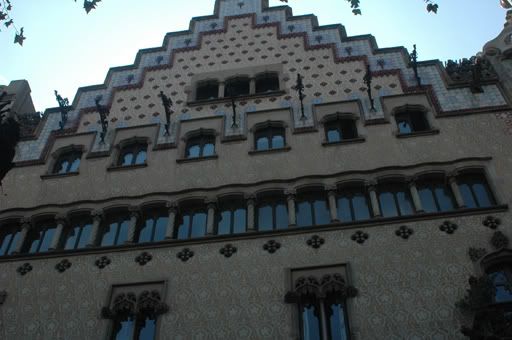
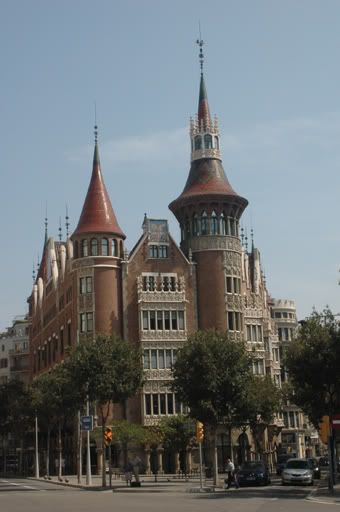
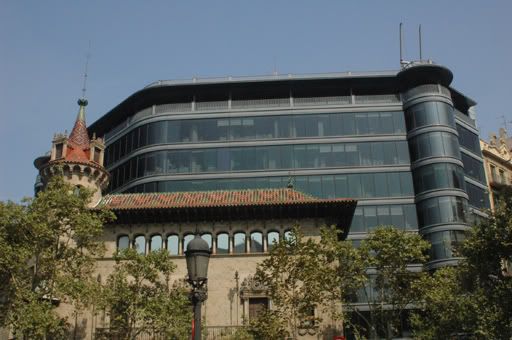


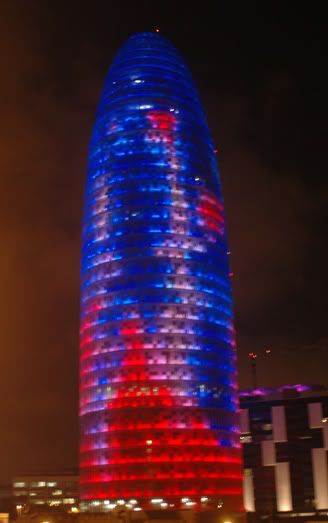
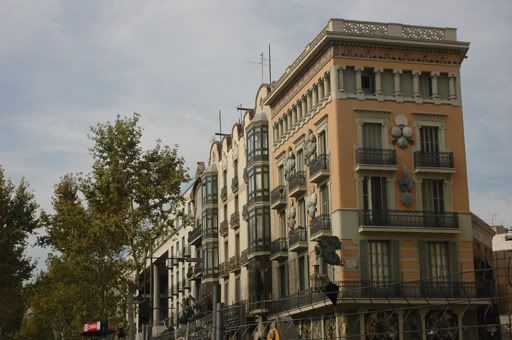
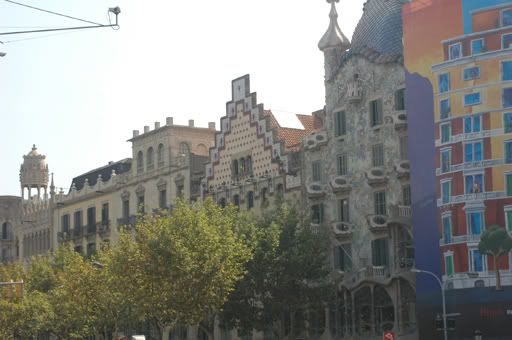
Antonio Gaudi was a devout Catholic and an eccentric architect whose work was and still is today an eye opener for anyone who is able to see his famous pieces of work in person. From his masterpiece, the Sagrada Familia to his innovative buildings on the Passeig de Gracia and his enchanting outdoor park, Parc Guell, Gaudi was definitely an architect who was not afraid to use his imagination and creativity. His pieces of work are one of a kind and are full of references to nature and to Catholicism. Let’s just say Chris was in la la land as we got a chance to see many of his world-renowned pieces of work.




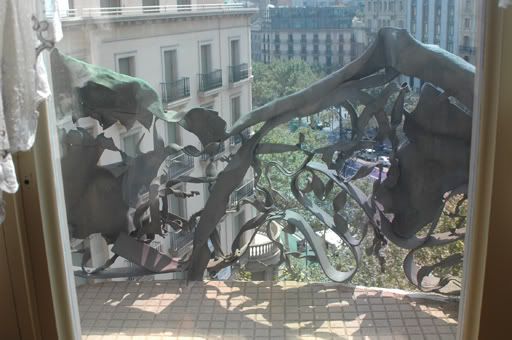

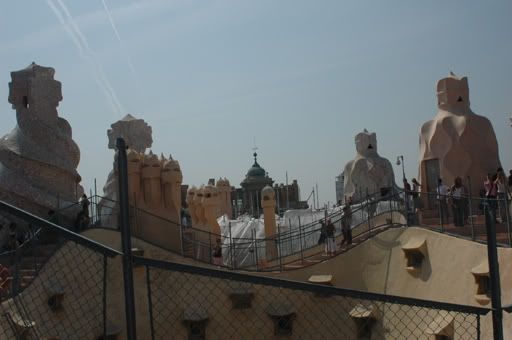
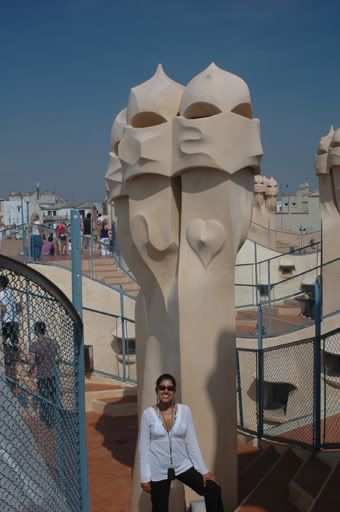
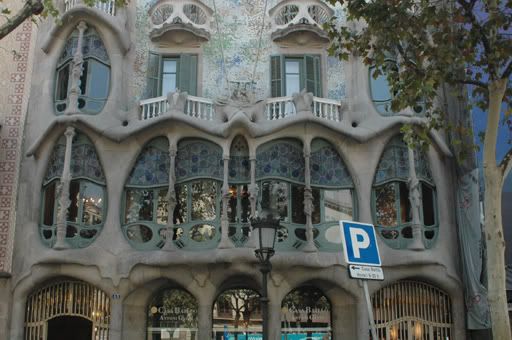
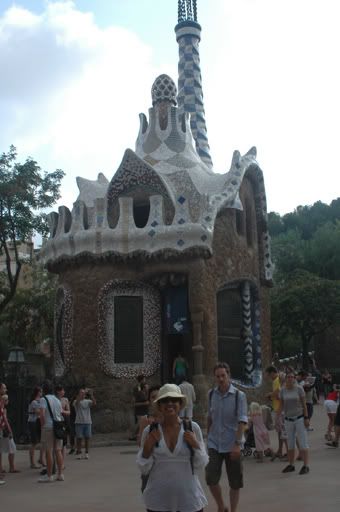
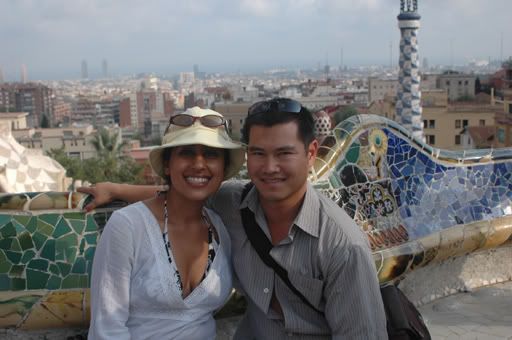
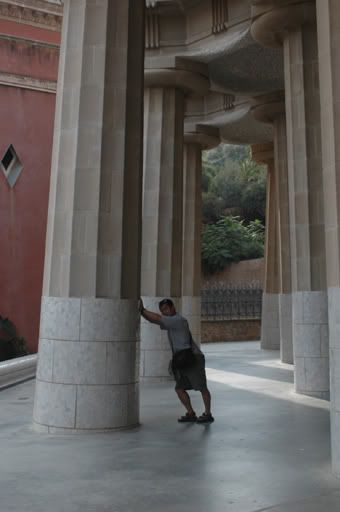



The Sagrada Familia is Europe’s most unconventional church and is Barcelona’s most famous building and landmark. It is said that a visit to this church is a once-before-you-die sort of experience and boy are they right. The construction of this unique temple began in 1882 and it’s still only half built today with construction continuing as far into the future as 2022. Gaudi spent over 40 years of his life on this masterpiece until his death in 1926 and is buried on the site in the crypt. His masterpiece is based on the use of innovative geometrical shapes of naturalist style and is the cornerstones on which the current architects continue the work to this date. The final construction of this church will have 18 towers in total with eight already built – the eight of the twelve bell towers of the façade, dedicated to the 12 Apostles and having a height exceeding 100 metres. Still to come are the 4 remaining towers dedicated to the Apostles and towers representing the 4 Evangelists, the Mother of God, plus the tallest tower (170m) standing for Jesus Christ.
We were looking forward to viewing the interior of the church and to be able to climb the steep stone steps to the top of one of the towers to take in the view as recommended by our friends Wendy & Tony (well maybe not Ton). They had been to Spain a few years prior and remember climbing the steep and narrow steps and being able to stop along the way to peek out the windows to see how high up you really are. Unfortunately, we were unable to climb the stairs this time around due to construction taking place in those areas. We ended up taking one of the two elevators to the top of the towers on the Nativity Façade, guess we’ll have to climb the towers the next time we come back.
I am at a loss of words as to how to describe this church. As soon as you enter this space, you are reminded immediately of how this is a “work in progress” with the many cranes, scaffolding and yellow tape all around limiting visitors to certain areas. The use of curves, stained glass and tiles is evident throughout the entire church and is what marks this creation as a Gaudi original. Pictures just do not do it justice.
We look forward to coming back in the future to see how far along the construction has come and to possibly see as close to the final version as possible.
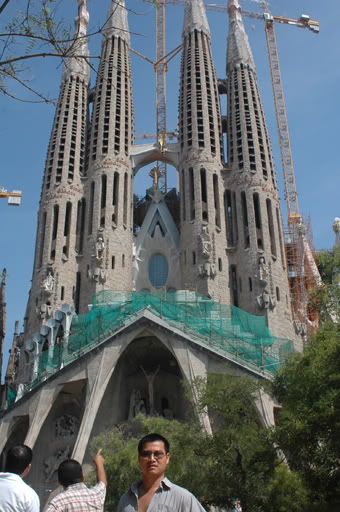

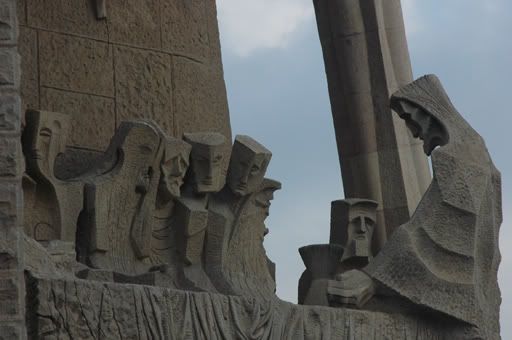
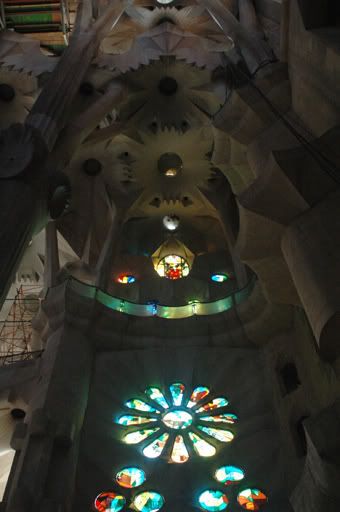
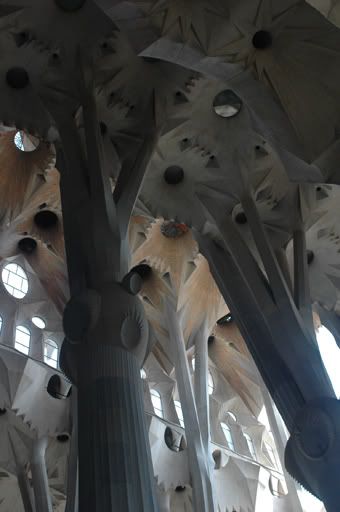
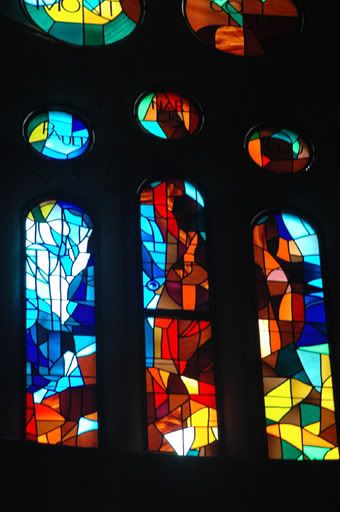
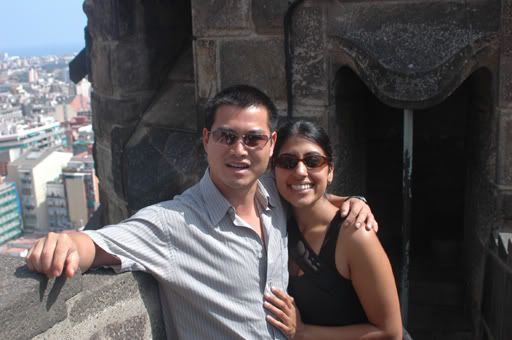
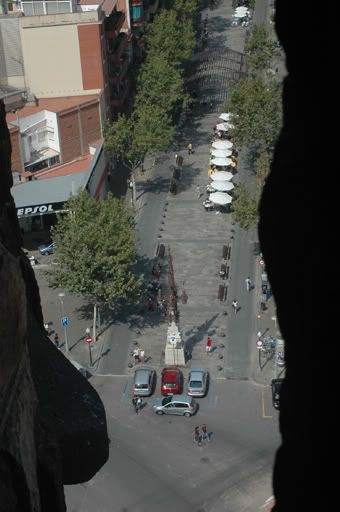
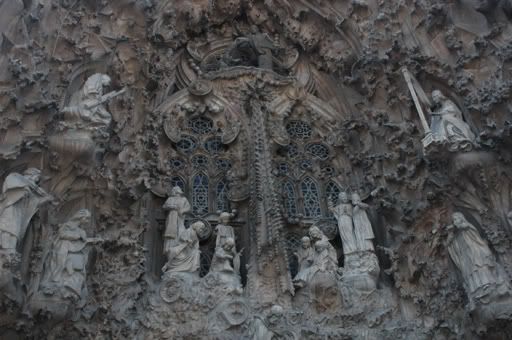
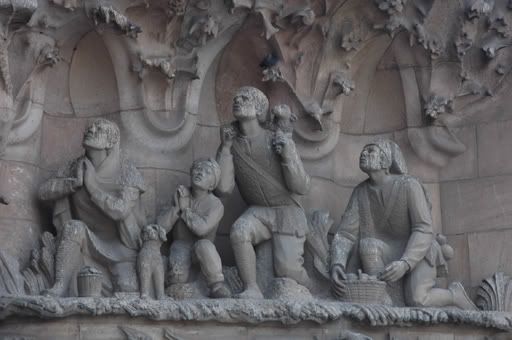
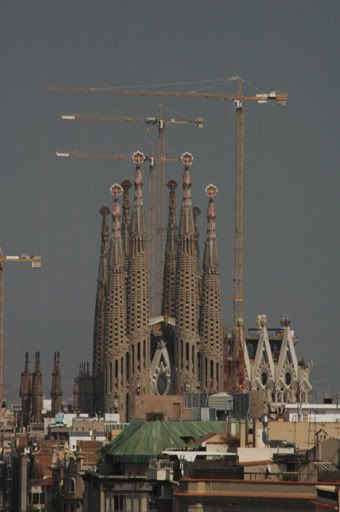
WATERFRONT
You can easily reach the beautiful blue waters of the Mediterranean at the bottom of Las Ramblas. Here you can take in the view, cross the Rambla de Mar footbridge to Port Vell or take in the sandy beaches along the Olympic Village.
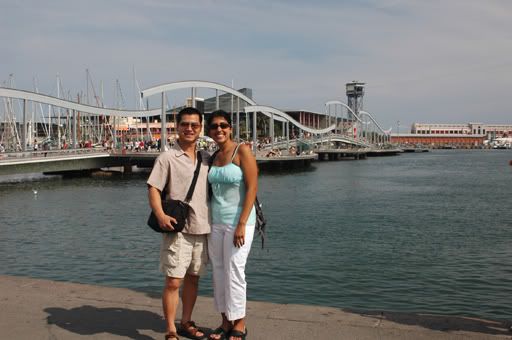

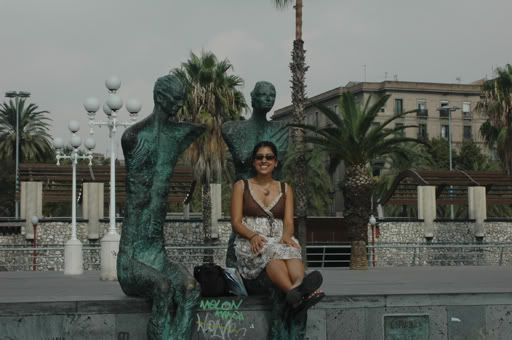

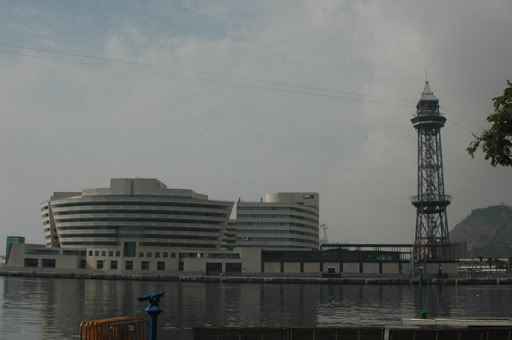
MONTJUIC
Montjuic is the central park of Barcelona, rising 213 metres (699 ft) above the city and is Barcelona’s biggest recreation area and a fabulous vantage point from which to view the city. The first plans for urbanizing the mountain were drawn up for the 1929 Universal Exposition and were only recently completed with the 1992 Olympics. It is a place where you can get away from the bustling streets of the city and just relax in the serenity and calmness that surrounds you. The park is home to the 1992 Olympic Ring, the National Palace, Meis Van Der Rohe’s Barcelona Pavilion, the Magic Fountain and Placa Esplanya.
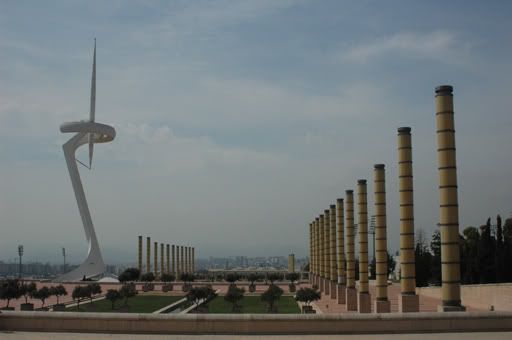

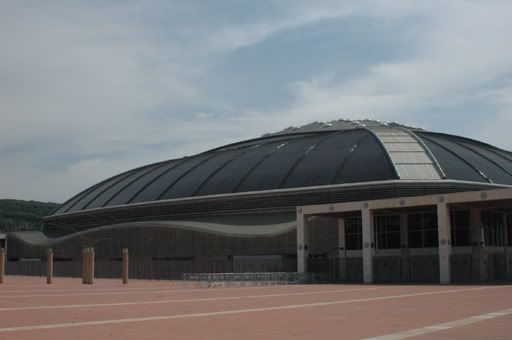

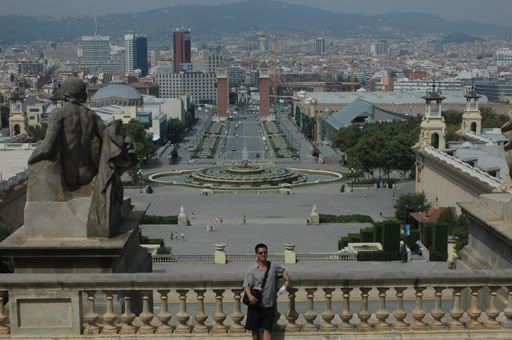
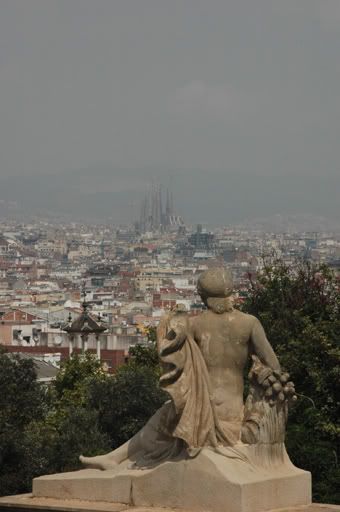
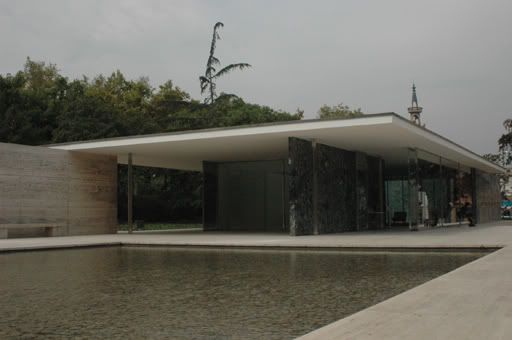
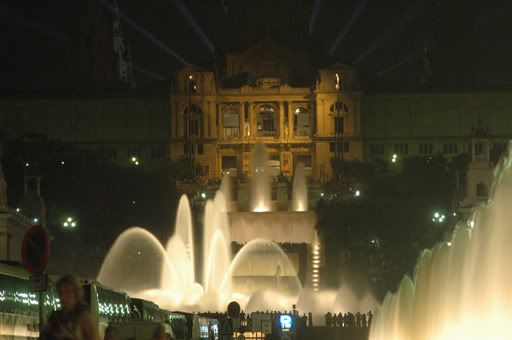
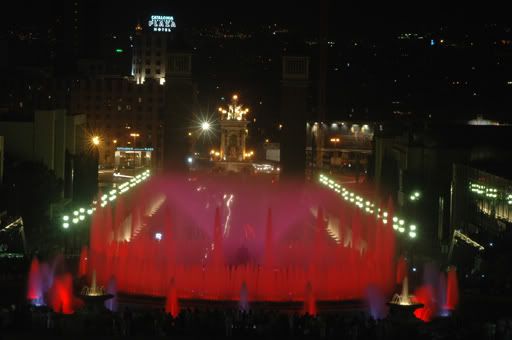
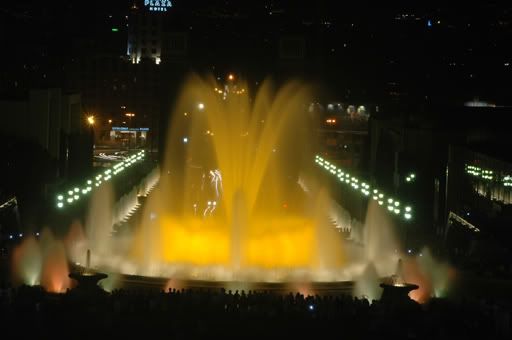
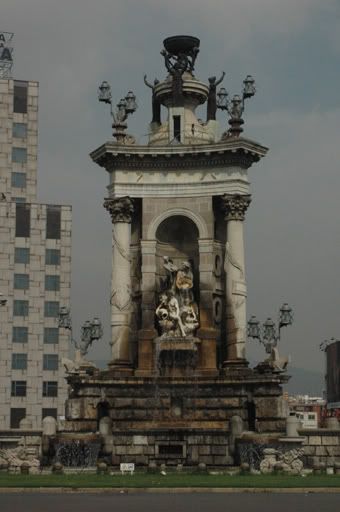
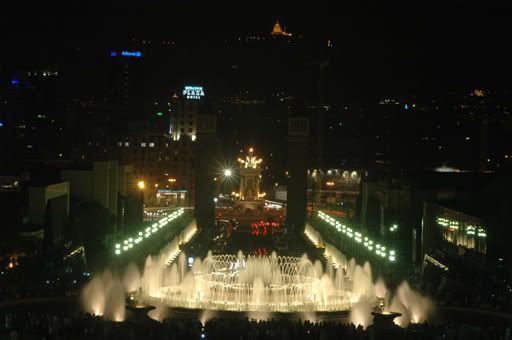
SANTA MARIA DEL MAR BASILICA
This holy shrine is thought by many to be one of the best examples of gothic architecture in Catalonia and superb acoustics for concerts. Chris and I were a bit disappointed though when we had a chance to visit the basilica, as it was not what we had envisioned. It was rather simple compared to the Barcelona Cathedral and the Monastery of Montserrat in our opinions.



MONASTERY OF MONTSERRAT
On day 3, we decided to take a small day trip 50km northwest of Barcelona to the Monastery of Montserrat which is set high atop a 1,236 metre “Serrated Mountain” (Mont Serrat) and is the home to one of Catalonia’s holiest places. A tram or cable car takes you to the top of the mountain and as I sat in the tram going further up and up and feeling the steepness of the mountain, I couldn’t help but wonder how this place of worship could have been built back in the day. Without trams and cable cars then, I could only imagine how hard it must have been for those who built this holy place of worship; I guess all you need is will power, a reason and a belief and beautiful and amazing things can be done.
The monastery was founded in 1025 after a statue of the Black Virgin Mary was found here. Pilgrims still come from all over Christendom to pay homage to the Black Virgin (La Moreneta), a 12th century wooden sculpture of Mary, regarded as Catalonia’s patroness. The statue stands in the basilica’s altar where the religious and the touristy line up for the chance to kiss it. Chris and I thoroughly enjoyed our time in Montserrat not only for the chance of visiting this holy place but to also be able to indulge in the beautiful surroundings we were in and to also be able to get a good hike in. Set amidst the mountain, is the holy site of Santa Cova where it is said that the Black Virgin statue was found. You could take a funicular half way down where you would then have a steep 15-minute hike to the shrine or you could hike the entire way. We opted for the latter and had a good workout while enjoying the natural surroundings all around us. It was a great day to get away from the hustle and bustle of lively Barcelona and to sit atop a mountain and just reflect.


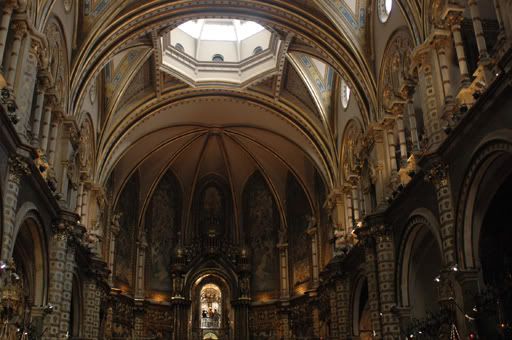
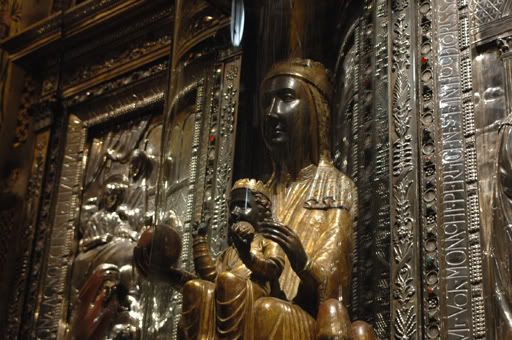

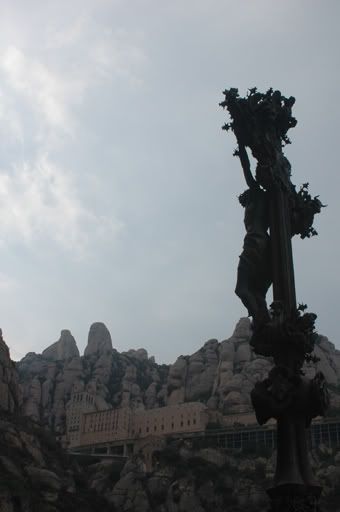
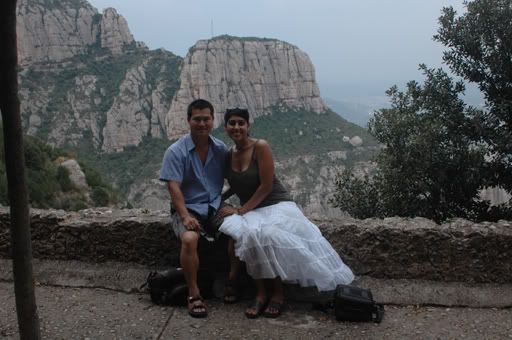
With five wonderful and exciting days in Barcelona, it was a great introduction to start our travels throughout Spain. We can’t wait to see what our next destination Valencia has to offer.
Until then adios amigos...
Roaming Ravy
2 comments:
I too am in awe of sinuous and curvy things... perticularly on women!
the mountains of Montserrat look cool, also curvy.
Joanne (China) said...
I plan to go to Barcelona in Janary for 5days or so for my birthday to celebrate it with my friend who's birthday it also is. She is moving there for a year to study from India, she was the tour leader I shared a room with in India and is Indian. You have made me soo excited and given me a head start on my research!!! You look like you had a fab time and are making the most of everything as always!!! Love your red dress with the flowers too! You look grogeous in it Rav! Amazed and in awe by the buildings in Barcelona already..How did u travel/book to go Montserrat? Could you e-mail and tell me? Thanks. xxxxxxxxx
Post a Comment